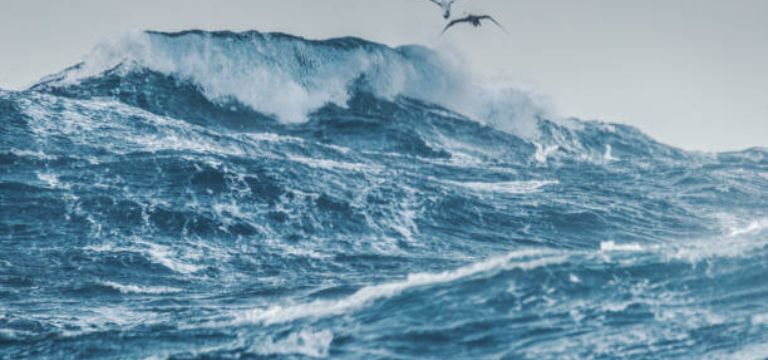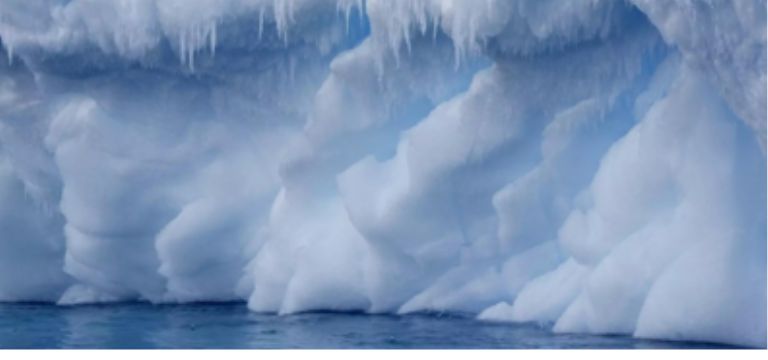Atlantic ocean which lies between the icy Arctic and the temperate waters of Antarctica, has been perceived differently since ancient times. Where there are twilights and shades of blue, unraveled secrets and history are written. At sea, explorations originated, or the aforementioned trade that shaped the world. Nevertheless, a recent groundbreaking study from the University of Lisbon, led by Professor João Duarte, has identified a subduction zone beneath the seemingly innocuous Gibraltar Strait, raising intriguing questions about the fate of the Atlantic in the distant future
The Subduction Zone: A Tectonic Threat

Subduction zones are territories, where the lithospheric plates, which are enormous parts of Earth’s crust, strive to meet. One plate dips below the other thereby starting a flowing chain of geological proceedings. There are a bunch of these zones around the world that people usually call the “Ring of Fire,” which makes you think of the crazy and wild Pacific Ocean. But now, a new “Ring of Fire” may be emerging in an unexpected place: the Atlantic ocean.
The study, led by Professor João Duarte at the University of Lisbon, has identified a subduction zone beneath the Gibraltar Strait, a narrow waterway separating Europe and Africa. Here, the African Plate is slowly but steadily diving beneath the Eurasian Plate, a process that has been ongoing for millions of years.
Atlantic Ocean: The Looming Atlantic Ring of Fire
While the current subduction zone beneath the Gibraltar Strait may seem insignificant, measuring only about 125 miles in length, the researchers’ projections paint a startling picture of its potential future growth. Using advanced computer simulations, they traced the evolution of this subduction zone from its formation millions of years ago to its projected trajectory over the next 20 million years.
The Westward Expansion: A Subduction Invasion
It is proposed that the western end of the subduction zone under the Gibraltar Strait extends according to the model.It will form a new Atlantic subduction systems aptly called”Ring of Fire” an analogous process to which has shaped the Pacific Ocean and is typically connected with the gradual pulling of the ocean’s floor underneath the continents to form the new ocean basin’s closure.
Researchers suggest that Plate B could host a subduction zone that is 500 miles long in the next 20 million years, which is 5 times longer than its width today. This westward migration will continue as it spreads further into the Atlantic, possibly paving the way for ocean closures in the future.
While the timeline of these transformations spans several millions of years, the impacts and consequences are unrivalled and ultimately essential. The paper published in the top journal Geology is causing anxiety in the scientific world and raising doubts about the sustainability of the Atlantic Ocean in the near future.
The Closure of an Atlantic Ocean: A Geological Transformation

Although many people find it hard to imagine, the idea of an ocean “closing up” is a natural process that has happened throughout Earth’s history. A continuous cycle of geological alteration occurs over enormous timeframes as tectonic plates move, continents migrate, and ocean basins open and close.
200 million years ago, the supercontinent Pangea broke apart, giving rise to the Atlantic Ocean as it is today. A new ocean formed as land split, letting water fill the gap, forming the Atlantic.
Although the publication by Portuguese researchers emphasizes the impending end of the pristine Atlantic scenario, the breaking of the thermohaline cycle could be just the beginning. The Gibraltar Strait subduction zone may shrink the oceanic basin by expelling ocean floor westward.
As this process is happening with a course of centuries, the changes which take place on the face of the Earth and her ecosystems are enormous. Shutting down the Atlantic Ocean not only modifies the world’s land water distribution but may also alter current climate patterns, ocean-currents, and the careful balancing of life on planet earth.
Atlantic Ocean: A Glimpse into Earth’s Distant Future
Though the timespan relevant to a possible closure of the Atlantic Basin is incredibly large, the analysis provides some clues on the possible world of our planet in the very distant future. It is a signal that Earth is an ever changing and dynamic system and that the coastlines and oceans you know today are but a moment in the time scale of the planet that has been around for the billions of years.
With the need to take immediate action to the climate change and environmental deterioration, this study is an example of the long-term approach to the change on the planet. We can better appreciate the complexity and the delicacy of environmental systems that mould our world and realize at the same time that we are earth’s caretakers by gaining more comprehension of those processes.
Encouraging Scientific Curiosity and Collaboration
The finding of the subduction zone beneath the Gibraltar Strait with its possible repercussions on the future of the Atlantic Ocean is a proof of scientific investigation and international collaboration power. The university of Lisbon’s researchers did indeed contribute a big piece to the jig-saw of Earth’s geological history.
Their work clearly shows the need for creation of environment that nurtures scientific inquisitiveness encouraging interdisciplinary research without borders. We will collaborate to exchange our expertise and resources, uncover novel insights about our planet, and enhance our readiness to confront forthcoming challenges and transformations.
Conclusion: A Call to Embrace Earth’s Dynamism
A stark reminder of how dynamic and constantly changing our planet is is provided by research on the subduction zone beneath the Gibraltar Strait and its possible effects on the future of the Atlantic Ocean. The results highlight the need of encouraging scientific curiosity and developing a greater understanding of the processes that create our environment, even when the timescales involved may seem enormous.

If we are to overcome the challenges we are facing at the moment, we must not lose sight of the long-term view and remember that the sceneries and coastlines of today are nothing but figments in the ever-changing saga that is Earth. Through this embracing the dynamism of the planet, across disciplines and borders, we can unravel new materials and better prepare for the transformations that await us.
The Atlantic Ocean, with its rich history and cultural significance, may face tremendous change one day, but its legacy will live on as a monument to nature’s power and our planet’s endurance. Let us gaze at its enormous expanse with a renewed sense of wonder and respect, a desire for more discoveries, and a thirst for that unknown journey that is ahead.

